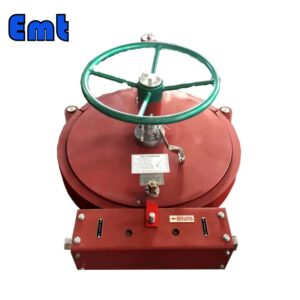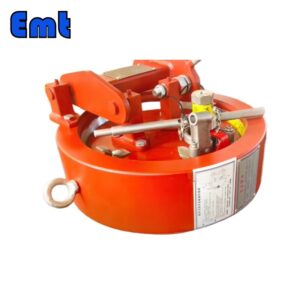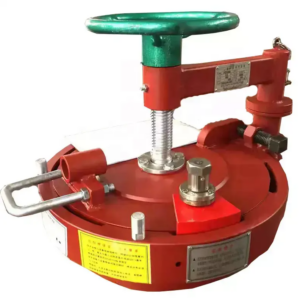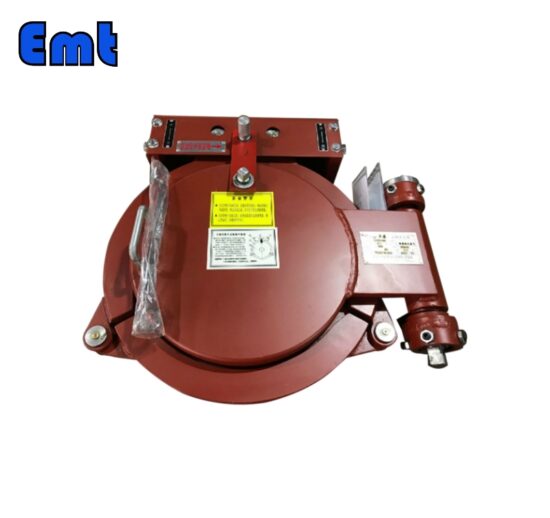Installation of Pig Closure
When initially installing the Pig Closure, adhere to the following strict rules:
Firstly, ensure the inner diameter of the closing group matches the equipment bucket. The gap should be uniform, and the butt joint must satisfy the requirements. Secondly, align the valve cover’s central axis with the barrel’s central axis precisely.
Before aligning the seal with the barrel, decide on the welding type. If you choose double-sided welding, remove the head cover. Conversely, for single-sided welding, simply remove the sealing ring without detaching the head cover.
Lastly, before proceeding with the welding of caps and casks, consult sections 2.3 for deformation and 2.4 for post-weld heat treatment instructions.
Headcover removal
To remove the head cover, follow these steps:
First, take out the “safety screw” and “locking plate.” Then, contract the locking band to the “open door” position.
Next, turn the handwheel to detach the valve cover from outside the cylinder flange. Ensure a specific distance exists between the cover face and the cylinder flange. Finally, rotate the rotary arm 180°.
Attention
Prevent scratches, scratches, and cracks on the sealing surface and mechanism surface during operation.
Strict adherence to the above operating procedures enables the re-alignment to proceed smoothly.
Note: Before welding the head to the equipment barrel, remove the head cover. When resuming assembly, special attention should be paid to reading 2.7—head cover center.
If there are two or more closures, mark them in pairs and store them securely to prevent errors during reset.
Operation
Peinture
The following preparation work must be done carefully before the closure is painted.
Remove stainless steel parts such as the U-ring, drive handle seat, lock ring limit plate, and so on.
Remove the lock plate and safety screw, and protect all sealing surfaces, relative sliding surfaces, lock rings, welding grooves, threaded holes, and fasteners such as bolts and nuts with adhesive paper or other methods.
To prepare the closure for painting, the lock plate, safety screw assembly, and seal must be removed from the door. When painting is required, the areas shown “masked” should not be painted but protected with a blast-proof masking material.
It is essential to do the above preparation carefully before painting! It can avoid affecting the assembly’s accuracy and performance. Prevent sandblasting and painting the product. Make the product’s appearance beautiful.
Maintenance of Pig Closure
Adjust the lock mechanism
If difficulties are experienced in hand opening or closing, you should adjust the lock mechanism. Close the closure and put the lock plate and safety screw into position. Please check if the eccentric stops and the retaining screws are loose or not when the closing process is not smooth. If it is loose, tighten it. And then repeat the previous action to verify the adjusted result.
Cover re-Installation
Once you’re ready to reinstall the lid, which is exactly the opposite of removing it, the steps are as follows:
Put the rotating arm into the shaft sleeve (2), tighten the lower screw (2), and rotate 180°.
Note: the rotating shaft, the rotating arm, and the shaft sleeve are integrated.
The cap is fully supported in an approved sling, and the screw is assembled into the inner hole of the bushing (1). Ensure that the screw is perpendicular to the cover plate.
Put in the handwheel and tighten the set screws
Then rotate the rotating arm 180° to bring the cover back to the center of the cylinder flange
Turn the handwheel counterclockwise, put the cover down, and check whether the cover is upright (refer to Upright Head Cover).
Centralized adjustment of valve cover according to 4.0 locking mechanism adjustment
Apply the grease evenly to all surfaces
Strictly follow the above steps to make the cover plate installation more smooth. In this process, scratches, cracks, etc., must be prevented.
Storage of Pig Closure
If the storage time is short, it is necessary to remove the seal, clean it, and apply grease to the seal, welding surface, and mechanical surface to prevent corrosion. Finally, reinstall the seal. Use desiccant if necessary.
Rubber (NBR, fluoro rubber) seals have a shelf life of 2 years. After reinspection, the shelf life can be extended by 1 year.
Storage conditions for rubber:
Temperature: The storage temperature should not exceed 25 °C. The lower temperature will not cause permanent damage to the rubber.
Light: It is best to pack in an opaque container or separate the storage area from harmful ultraviolet rays. This can avoid direct sunlight and strong artificial light containing ultraviolet rays.
Oxygen: Where possible, rubber products should be protected from circulating air by packaging, sealed containers, or other suitable methods.
Deformation: Rubber products should be stored under relaxed conditions, not affected by stretching, compression, or other deformation. Seals must not be suspended from single-point supports that may deform the seal shape.
Note: When storing, pay attention to the sealing surface and make sure the mechanism surface is not damaged.









Il n’y a pas encore d’avis.